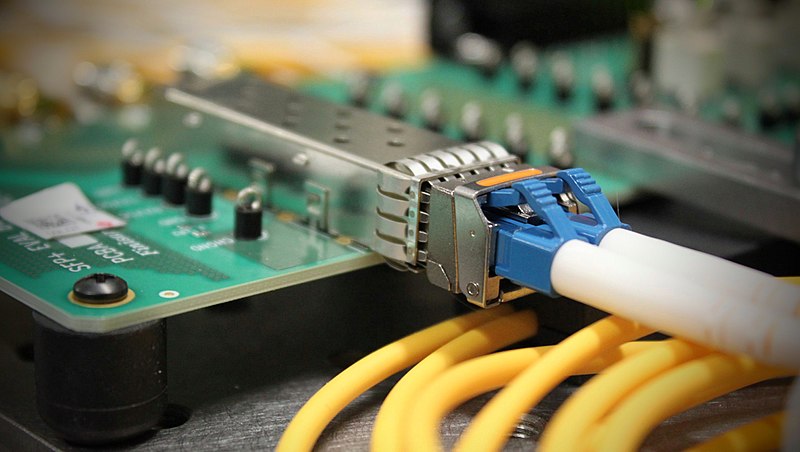The Story of Light by Bell Labs (2015)
Source. Gives some ideas of the history of fiber optics. Features: Herwig Kogelnik.Fiber optics fundamentals by Shaoul Ezekiel
. Source. 2008 at MIT. Theory and demonstration.- youtu.be/0DCrIAxEv_Y?t=560:Terefore, the 1.5 micrometer window truly is the minimum.
- on smaller wavelengths, loss is due to Rayleigh scattering
- on longer wavelengths, loss is due to material absorption
These are closely related to lasers, as they do a similar basic job: take a DC source as input and amplify light. Lasers just happen to use the input voltage to also generate the incoming light.
This one was a huge advance it seems.
It's the thing that allows you to connect fiber optics into a compter, or the corresponding port for the thing.
Many of them can take two fibers as input/output because fiber optics cables often come in pairs because it is needed for duplex.
From a practical point of view single-mode:
As such, typical applications are:
- single-mode optical fiber: longer distance communications across buildings and cities
- multi-mode optical fiber: shorter distance communications e.g. within a single data center
Then there are some more hardcore threads actually pondering about specific cost trade-offs:
From a mathematical point of view:
- multi-mode: en.wikipedia.org/w/index.php?title=Optical_fiber&oldid=1229833804#Multi-mode_fiber:
Fiber with large core diameter (greater than 10 micrometers) may be analyzed by geometrical optics. Such fiber is called multi-mode fiber. In a step-index multi-mode fiber, rays of light are guided along the fiber core by total internal reflection.
- single-mode: en.wikipedia.org/w/index.php?title=Optical_fiber&oldid=1229833804#Single-mode_fiber:
Fiber with a core diameter less than about ten times the wavelength of the propagating light cannot be modeled using geometric optics. Instead, it must be analyzed as an electromagnetic waveguide structure, according to Maxwell's equations as reduced to the electromagnetic wave equation. As an optical waveguide, the fiber supports one or more confined transverse modes by which light can propagate along the fiber. Fiber supporting only one mode is called single-mode.
Another difference is that single-mode fiber usually uses lasers as the light soruce, while multi-mode fiber usually uses LED:
Bibliography:
2009 Nobel Prize lecture
. Poor Charles was too debilitated by Alzheimer's disease to give the talk himself! But if you've got a pulse, you can get the prize, so all good.This section is about stuff efficiently getting light into or out of optical fibers, or joining two optical fibers together end to end so that light goes through.
Historically this has been an important development, as it is much harder than with wires since optical fiber has to be very narrow to work properly, e.g. this is mentioned a lot in City of Light: The Story of Fiber Optics.
Articles by others on the same topic
There are currently no matching articles.


